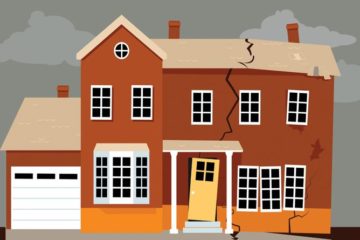California Law requires homeowners associations to prepare a reserve study every three years in order to properly plan for funding the maintenance, repair and replacement of common area “major components”. The purpose of the reserve study is to anticipate when major repairs will be needed, and to ensure the funds are available in the reserve account for those repairs at that time.
A large part of the reserve study is determining the useful life and remaining useful life of the major components. For example, the roof could have a useful life of 20 years, but have a remaining useful life of 12 years—i.e., because the roof has already been in use for 8 years. Therefore, the association’s reserves should be funded to replace the roof in approximately 12 years.
However, associations can—and should—be proactive with preventative maintenance in order to extend the useful life of major components. In most circumstances, maintenance is the most important factor for extending useful life. The short term costs incurred for performing preventative maintenance will save the association money in the long term. Conversely, if maintenance is deferred on one component, it can adversely impact other components, thereby costing the association more money. For example, if seasonal cleaning of the gutter and downspout system is not performed, premature failure of the roofing system could occur due to ponding, termite infestation, or mold growth. If this happens, reserve funds for roof replacement could be necessary well in advance of the date anticipated by the reserve study. If the reserves are not well funded, this could then result in a special assessment.
Associations should include line items in operating budgets to account for routine maintenance. Some examples include seasonal cleaning of the gutter and downspout system, touch-up painting, regular lubrication of mechanical equipment, and adjusting coolant and replacing filters of HVAC equipment. Such maintenance can reduce the annual cost (depreciation) of the component. For example, if a component costs $10,000 and has a useful life expectancy of 10 years, the annual cost is $1,000 ($10,000/10 = $1,000). However, if the association has a maintenance program in place to extend the components life by 20%, the annual cost can be reduced to $833.30 ($10,000/12 = $833.33).
In addition to including line items in the operating budget for routine maintenance, associations should replace major components with as high a quality product as can be afforded. In most cases, a more expensive product will perform better and last longer than a less expensive product.
Finally, bear in mind that reserve funds must be fluid to meet particular needs. Funds can be shifted between components as needed to repair items that fail earlier than expected. On the other hand, if a component costs less to repair than anticipated, the remaining funds can be allocated elsewhere as needed.
Preventative maintenance is a key component to a healthy reserve account. As we all know, when it comes to health, “an ounce of prevention is worth a pound of cure”.



